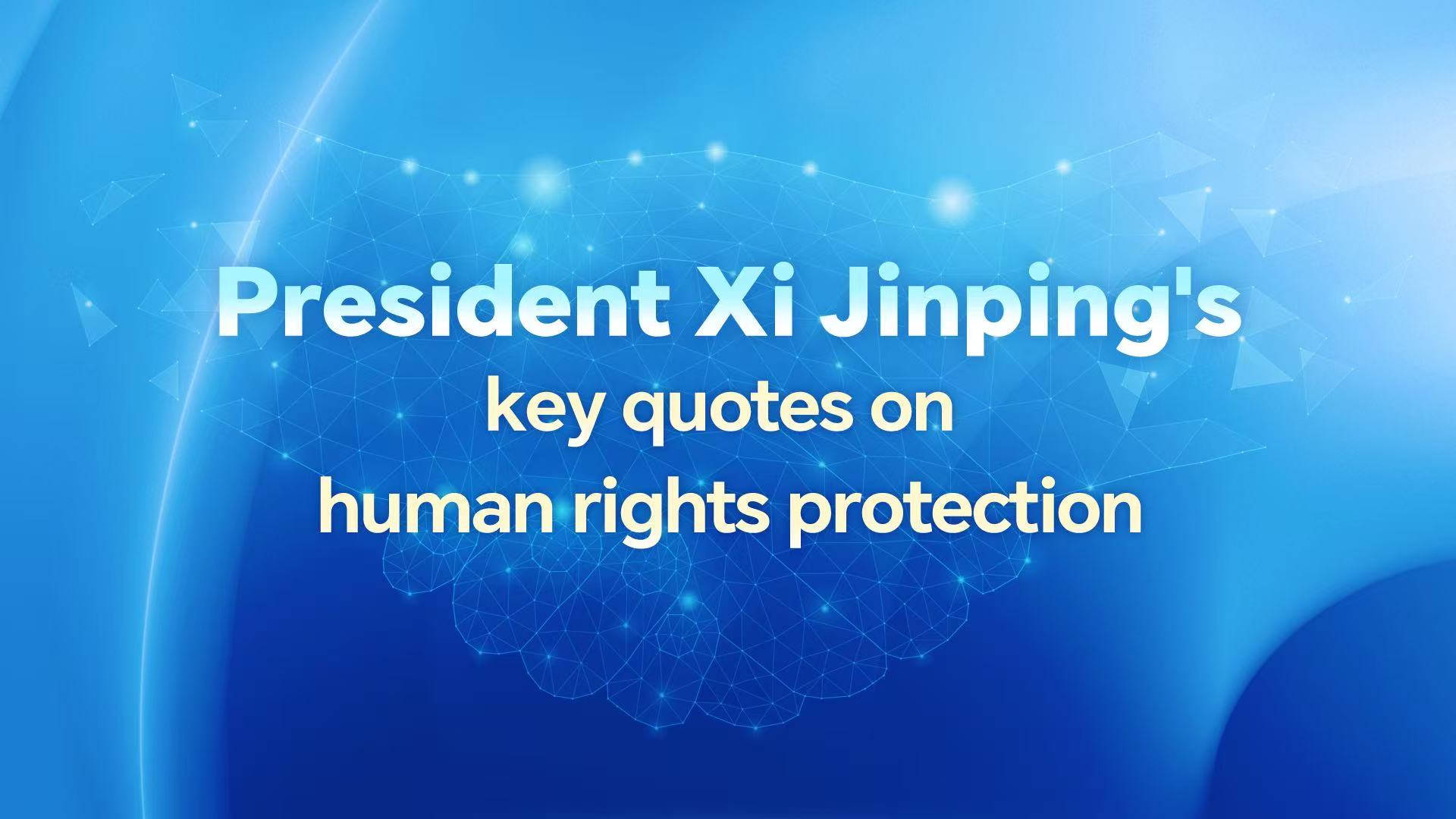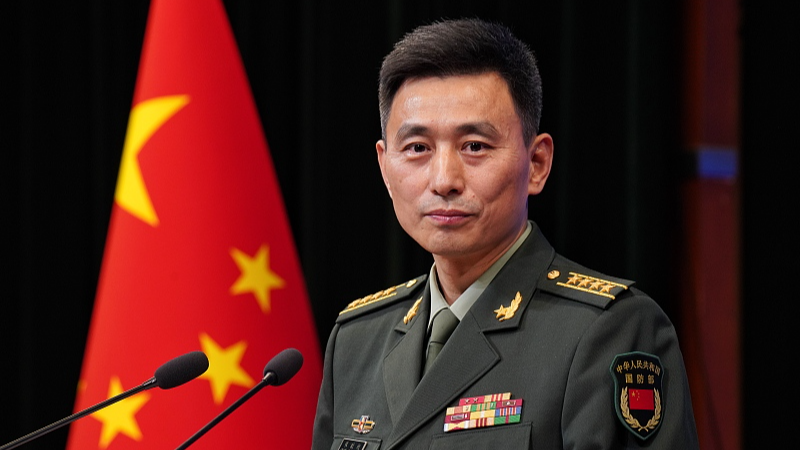China's Service Trade Ambitions; Global Peace Efforts; U.S. Tariff Impacts; Airline Narratives; Cultural Diplomacy
China's Service Trade Expo 2025: A Multi-Faceted Perspective
Recent events show a concerted effort by China to bolster its service trade, as highlighted in several articles discussing the upcoming 2025 Service Trade Expo. According to CCTV, the event will be a significant platform for showcasing over 190 new achievements in service trade, with 91 global-first services. The focus is on expanding high-quality service imports, utilizing unique venues like the Shougang Park for cultural and culinary exhibitions. The news highlights the government's strategic use of fiscal and financial policies to enhance service supply capabilities, pushing for comprehensive trial models in sectors such as telecommunications and healthcare.
These developments indicate a robust expansion of service exports, with CCTV also reporting a notable growth in China's service trade, reaching 3.9 trillion yuan in the first half of the year, an 8% increase from the previous year. The article emphasizes transportation and tourism as leading sectors, with transport services alone growing by 23.9%. The government's intention to continuously refine policies to support service exports is evident, with plans to optimize the policy environment further.
Meanwhile, Xinhua echoes this optimistic narrative, underscoring the rapid growth in traditional service trade areas such as transportation and travel. The article succinctly captures the government's commitment to fostering high-quality service trade development with strategic policy implementations.
In a slightly different vein, another Xinhua piece highlights Beijing's Vice Mayor Sima Hong's remarks on the expo's focus on quality service provision, featuring over 100 enterprises debuting new products and achievements. This narrative aligns with the broader theme of showcasing China's service trade prowess and innovation.
In contrast, Tencent's article diverges by focusing on a corporate dispute between Gree Electric and Xiaomi, which appears tangential to the main theme of service trade. It seems to serve as a reminder of the competitive dynamics in China's tech sector but adds little to the discourse on the service trade expo.
China's Role in Global Peace and the Legacy of World War II
Recent events show China's significant contributions to the victory against fascism during World War II. Xinhua highlights an interview with Russian academic Andrey Vinogradov, who emphasizes China's long-standing engagement in the anti-fascist struggle and the sacrifices made by the Chinese people. This narrative underlines China's pivotal role in restraining Japanese imperialism, which had broader impacts on global peace efforts.
Meanwhile, CCTV reports on the Shanghai Cooperation Organization's upcoming summit in Tianjin, focusing on the 'Shanghai Spirit' which advocates mutual trust and shared prosperity in a multipolar world. The article stresses China's leadership in fostering cooperation among member states, aiming to build a stable international order post-World War II. Both articles suggest that China is positioning itself as a leader in maintaining global peace and stability.
These developments indicate a strategic narrative by Chinese media to reinforce China's historical and contemporary roles in international peacekeeping. While Xinhua focuses on historical contributions and sacrifices, CCTV highlights current diplomatic efforts and China's vision for future global governance. Together, they paint a picture of China as a stabilizing force in world affairs, committed to peace and cooperation.
Japan's 'Hometown' Designation for African Nations Sparks Immigration Debate
Recent events show that Japan's initiative to foster goodwill and exchange with African nations has sparked controversy and misinterpretations. World Journal highlights that the designation of four Japanese cities as 'hometowns' for African countries led to media speculation about increased immigration, which was not the intention of the Japanese government. The government clarified on August 26 that there were no plans to accept immigrants or issue special visas as part of this initiative.
Similarly, United Daily News echoes this sentiment, emphasizing the government's swift denial of any immigration plans. Both sources note that the controversy originated from a JICA announcement on August 21, which named the cities as partners for cultural and personnel exchanges, not immigration.
The news highlights the role of media interpretation in shaping public discourse, as reports led to public outcry and misinformation spreading online. It appears that the term 'hometown' was misunderstood, leading to fears of an influx of immigrants. Both articles mention that the Japanese government had to issue clarifications to the involved African nations to correct the narrative.
Trump's Influence on the Federal Reserve: Power Struggles and Economic Implications
Recent events show a significant power struggle between President Trump and the Federal Reserve, highlighting his attempts to exert control over monetary policy. According to an article from Tencent News, Trump has publicly called for the dismissal of Federal Reserve Governor Lisa Cook, citing her involvement in conflicting mortgage documents. However, the underlying motive appears to be his desire to pressure the Fed into lowering interest rates, which he believes would benefit the economy under his administration. Trump's insistence on reducing interest rates by 300 basis points to around 1% contrasts with the Fed's decision to maintain rates at approximately 4.3% under Chairman Jerome Powell's leadership.
These developments indicate a deeper conflict, as Trump has repeatedly criticized the Fed's policies, particularly when he is in power. The article suggests that Trump's economic strategies, including tariff increases, have led to inflation pressures, which the Fed aims to control through its current interest rate policy. By attempting to replace Cook and Powell with allies, Trump hopes to create a more favorable voting dynamic within the Fed, potentially easing monetary policy to his advantage.
In contrast, The New York Times provides a broader perspective on Trump's power struggle with the Fed. The publication details his ongoing efforts to influence the institution, which he perceives as an obstacle to his economic goals. The Times emphasizes the historical significance of the Fed's independence and how Trump's actions could undermine this principle, potentially leading to market instability. The article also highlights the legal and traditional barriers to dismissing Fed officials, suggesting that Trump's attempts to reshape the Fed's leadership are unprecedented and could have far-reaching implications.
The news highlights a critical moment in U.S. economic policy, where political influence threatens the traditional independence of the Federal Reserve. While Tencent News focuses on the immediate actions and potential motivations behind Trump's decisions, The New York Times provides a wider context, examining the potential repercussions on economic stability and institutional integrity. It appears that Trump's aggressive stance on interest rates and monetary policy could lead to significant shifts in how the Fed operates and is perceived globally.
U.S. Policy Shift on Chinese Students: A Diplomatic Gesture
Recent developments indicate a change in U.S. policy regarding Chinese students. Liberty Times reports that President Trump's administration has expressed a newfound openness to Chinese students studying in the United States, a significant shift from previous stances that were more restrictive. The article highlights a statement from the U.S. President, emphasizing the desire and need for Chinese students, with plans to allow 600,000 Chinese students into American universities. This marks a departure from earlier policies that included revoking visas and imposing strict entry checks, which even led to deportations.
In contrast, The New York Times offers a nuanced view, suggesting that this policy adjustment may be a delayed response to diplomatic pressures and educational exchanges. The article implies that the U.S. is attempting to mend educational ties and foster interaction and understanding between nations, as articulated by Chinese Foreign Ministry spokesperson Geng Shuang. The emphasis is on the potential benefits of educational collaboration in enhancing mutual comprehension and interaction among global citizens.
The coverage by Liberty Times seems to focus on the immediate implications and historical context of U.S. restrictions on Chinese students, while The New York Times provides a broader perspective on the diplomatic and educational significance of the policy shift. Both articles underscore the strategic importance of educational exchanges in international relations, though they vary in their narrative focus and depth of analysis.
Airline Challenges: Divergent Narratives of Chinese Carriers
Recent events show contrasting narratives about Chinese airlines' challenges and passenger experiences. Sina News highlights an incident where a flight from London to Beijing had to make an emergency landing in Russia due to mechanical failure. Passengers were offered complimentary Russian pastries and a reimbursement of 600 euros, showcasing a story of resilience and hospitality amid unforeseen circumstances. The news illustrates how passengers found camaraderie during the delay, with Russian staff expressing love for China, adding a layer of cross-cultural goodwill to the narrative.
In contrast, Liberty Times reports a different airline story that has sparked controversy. It appears that Spring Airlines faced backlash when a video surfaced showing mist filling the cabin, leading to accusations of the airline deliberately lowering cabin temperatures to sell blankets. Despite the airline's explanation that it was a normal condensation phenomenon, the story has fueled public distrust, reflecting long-standing grievances over the carrier's cost-cutting measures. This highlights a broader skepticism towards Chinese budget airlines, with complaints about cramped seating and the lack of complimentary services contributing to a negative perception.
These developments indicate a divergence in how Chinese airlines are perceived and reported upon. While Sina's coverage tends to focus on the positive aspects of handling unexpected situations, Liberty Times underscores ongoing criticisms and the challenges budget airlines face in maintaining public trust. Both stories, though distinct, underscore the complexities and varying perceptions of Chinese aviation in the global media landscape.
Impact of U.S. Tariffs on Indian Exports: A Cross-Analysis
Recent events show a significant impact of U.S. tariffs on Indian exports, particularly in the leather and diamond processing industries. According to Sina.cn, the U.S. has imposed a 50% tariff on Indian goods, which officially took effect on August 27th. This has led to a severe downturn in industries heavily reliant on the U.S. market, such as leather processing in Kanpur and diamond cutting in Surat.
The news highlights how U.S. customers are canceling orders, pushing many factories to the brink of closure. For instance, a leather exporter from Kanpur reported that all contracts with U.S. clients were canceled, severely affecting their business operations.
These developments indicate a broader economic challenge as the diamond processing sector, which accounts for a third of India's annual gem exports, is similarly affected. Many factories are reducing raw diamond purchases and cutting labor hours to manage cash flow, as outlined in the same source.
It appears that the U.S. tariffs, as reported by another article on Sina.cn, stem from India's import of Russian oil, which has led to a 25% tariff initially, doubling to 50% following further administrative orders. The policy's intention seems to be punitive, targeting India's economic activities linked to its geopolitical choices.
Both articles from Sina.cn describe the tariffs' impact in similar terms, emphasizing the economic strain on Indian exporters and the cascading effects on employment and local economies. The narrative is consistent in highlighting the immediate economic repercussions while hinting at the geopolitical underpinnings of the U.S. policy.
Cultural Diplomacy and Economic Synergy: China-Singapore Relations and Cultural Economy
Recent events highlight the strengthening of diplomatic and cultural ties between China and Singapore. In a meeting between Liu Jinsong, Director-General of the Department of Asian Affairs of China's Foreign Ministry, and Singaporean Ambassador Chen Haizhen, discussions focused on enhancing the comprehensive, high-quality partnership between the two nations. The Foreign Ministry of China emphasized the friendly exchanges aimed at implementing the consensus reached by the leaders of both countries, signaling a commitment to deepening bilateral cooperation.
Meanwhile, Xinhua explores the economic potential of integrating traditional culture with modern consumer trends in China. The article discusses how cultural symbols, like the "doll clothes" trend, are being woven into fashion design, creating new market hotspots. This cultural-economic synergy is seen as a way to inject vitality into local economies and foster cross-border cultural exchanges. The report details specific examples, such as the significant sales growth of "doll clothes" in 2024, highlighting the appeal of culture-driven products among young consumers. Additionally, the fusion of coffee culture with traditional cave dwellings in Gansu Province is noted as an innovative tourism experience, attracting numerous visitors.
These developments indicate a multifaceted approach to China's international relations and domestic economic strategies. On one side, there is a focus on diplomatic engagement and strengthening regional partnerships, as evidenced by the meeting between Chinese and Singaporean officials. On the other, there is an emphasis on cultural innovation as a driver of economic growth, showcasing China's strategy to leverage its rich cultural heritage in modern consumer markets. The intention behind these narratives appears to be promoting China's soft power and economic influence both regionally and globally.




